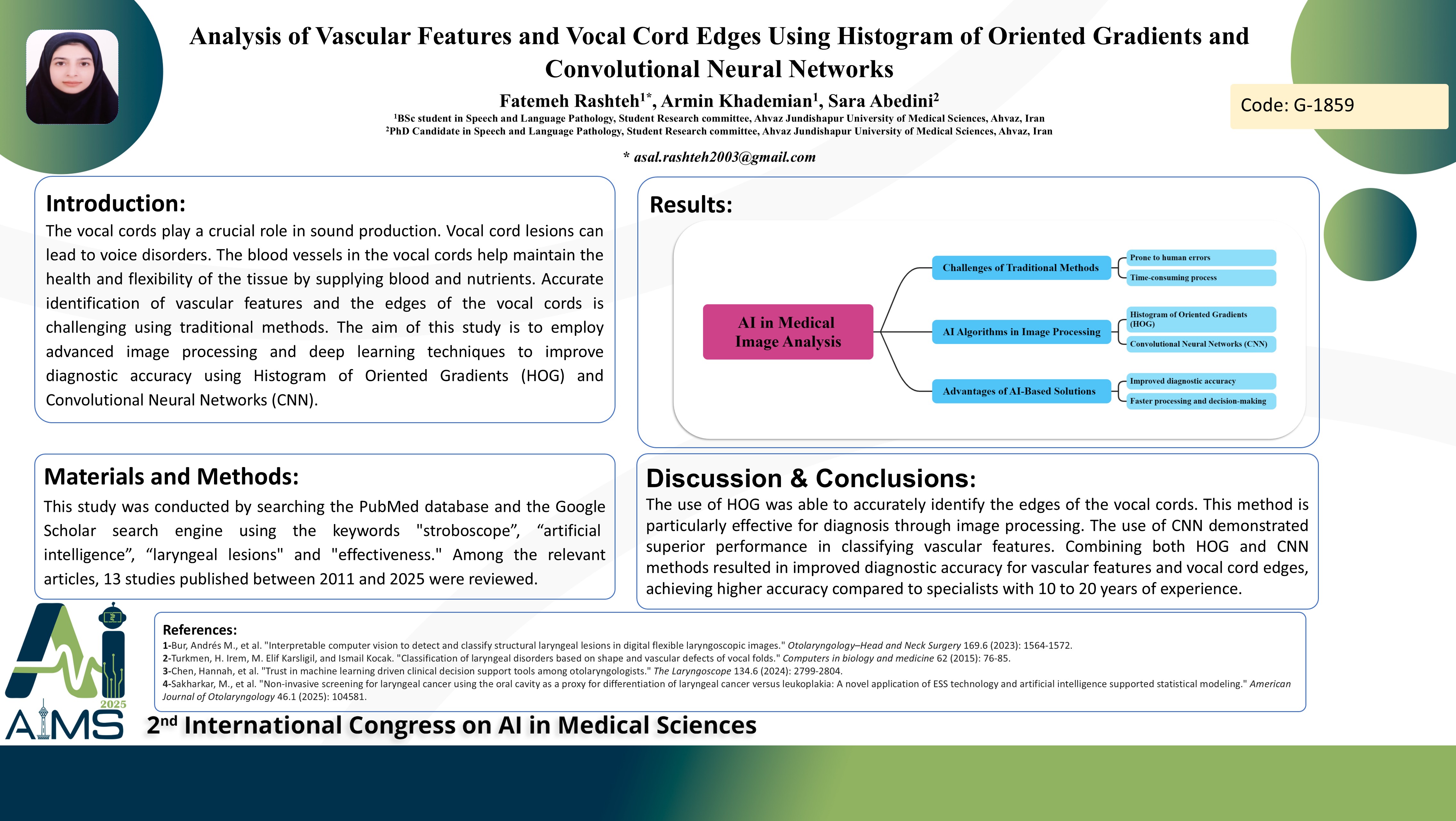تحلیل ویژگیهای عروقی و لبههای طنابهای صوتی با استفاده از هیستوگرام گرادیانهای جهتدار و شبکههای عصبی پیچشی
کد: G-1859
نویسندگان: Fatemeh Rashteh * ℗, Armin Khademian, Sara Abedini
زمان بندی: زمان بندی نشده!
برچسب: پردازش سیگنال های پزشکی
دانلود: دانلود پوستر
خلاصه مقاله:
خلاصه مقاله
Background and aims: The vocal cords play a crucial role in sound production. Vocal cord lesions can lead to voice disorders. The blood vessels in the vocal cords help maintain the health and flexibility of the tissue by supplying blood and nutrients. Accurate identification of vascular features and the edges of the vocal cords is challenging using traditional methods. The aim of this study is to employ advanced image processing and deep learning techniques to improve diagnostic accuracy using Histogram of Oriented Gradients (HOG) and Convolutional Neural Networks (CNN). Method: This study was conducted by searching the PubMed database and the Google Scholar search engine using the keywords "stroboscope”, “artificial intelligence”, “laryngeal lesions" and "effectiveness." Among the relevant articles, 13 studies published between 2011 and 2025 were reviewed. Results: Traditional methods, such as manual image inspection by specialists, have always faced challenges like human errors and time consumption. Therefore, the use of artificial intelligence algorithms and image processing techniques like HOG and CNN has emerged as novel solutions to improve both diagnostic accuracy and speed. Conclusion: The use of HOG was able to accurately identify the edges of the vocal cords. This method is particularly effective for diagnosis through image processing. The use of CNN demonstrated superior performance in classifying vascular features. Combining both HOG and CNN methods resulted in improved diagnostic accuracy for vascular features and vocal cord edges, achieving higher accuracy compared to specialists with 10 to 20 years of experience.
کلمات کلیدی
Vocal Cords, Image Processing, Deep Learning
